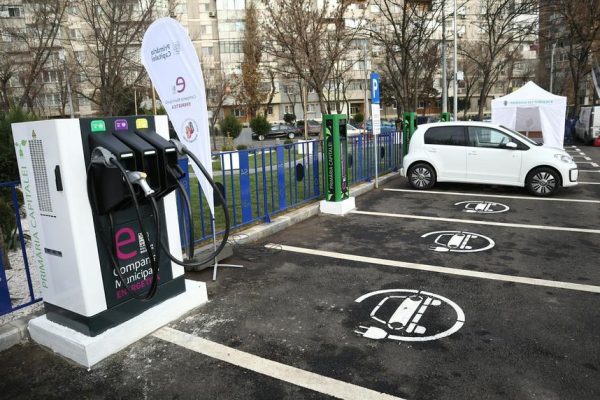EV sales are back on track. A total of 2,65 million new EVs found new owners during the first half of 2021, an increase of +168 % compared to 2020. The recent increases speak hyper-growth but need to be seen relative to the low base of 2020 H1. During the 1st wave of the pandemic, global sales of EVs stayed -14 % below 2019 H1 volumes as vehicle markets declined by -28 % during 2020 H1. The market recovery shaped up in 2020 H2 with rapid gains in volumes and shares for EV, esp. in Europe, driven by attractive products, extensive green recovery funds and the 95g CO2 mandate.
For 2021, all regions and most countries witness strong increases in EV sales, with growth rates 3 to 8 times higher than for total light vehicle markets. The share of BEV+PHEV in global light vehicle sales increased from 3 % in 2020 H1 to 6,3 % this year. Europe (EU+EFTA+UK) leads with 14 % EV share for the first 6 months combined, up from 7 % a year ago. A caveat is that half of Europe’s EV sales are PHEVs, compared to 80 % pure electric outside Europe. The tailpipe emissions of PHEVs are completely depending on the charging and driving habits of their users, whatever the catalog value says. To their benefit it can be said that countries with high PHEV market shares usually have high BEV market shares as well.
Tesla leads global EV sales with 386 000 units (all BEV) delivered during H1, followed by the Volkswagen Group with 332 000 units, thereof 172 700 BEVs and 159 400 PHEVs. GM comes in 3rd with 227 000 units (221k were BEV), including over 180k of Mini-EVs from their SGMW joint venture in China. Growth was robust in all product segments except for sportscars. In the product segment mix, the trend is from sedans and compacts into SUVs. Most striking, though, is the re-bound of mini-EVs in China, now at ultra-affordable prices of 30-60 000 RMB. Read Wuling Hongguang Mini EV, Great Wall Ora R1, Chery eQ, SAIC Roewe Clever, Baojun and others. Around 300 000 units of them were sold during H1, a quarter of all NEV sales in China. They offer a long due improvement over countless, dodgy Low-Speed Vehicles from the earlier days, which are now banned by regulators. The new breed is exempted from some M1 vehicle requirements, often receives no subsidies but is, nevertheless, counted in the Chinese NEV tally.
Including these, we expect sales of 6,4 million EVs in 2021, a growth of 98 % over 2020, with BEVs reaching 4 million units and PHEVs 2,4 million units. Growth rates will come down from the +168 % seen in H1, as volumes compare to a higher base during the 2020 H2 recovery. By the end of 2021 we expect over 16 million EVs in operation, counting light vehicles, 2/3 BEVs and 1/3 PHEV.

Rapid growth in all regions
Global light vehicle markets have partly recovered from the -28 % slump in 2020 H1 and increased by +28 % combined (which is still 8 % lower compared to 2019 H1). The recovery is uneven, though. Western Europe auto sales, which were hit hardest during the pandemic (-40 % y/y in H1-2020), rebounded by +29 % this year but are still 20 % below the 2015-2019 average.EV sales held up better during the crisis, lost only -14 % during 2020 H1 and for this year their growth rates are 3 to 8 times higher than for the underlying vehicle markets.
Because of the low-base-effect, growth rates were extraordinary during the first 6 months of 2021, reaching 157 % in Europe, 197 % in China, 166 % in USA and 95 % in the remaining markets. The recent uptake is impressive and it is broad based: Except for Japan, all major markets posted new records in EV sales and share during the first half of the year.
New all-time-highs will be common also during the 2nd half, but growth rates will be significantly lower as the low-base-effect diminishes.


EV sales trending towards 6,4 million for 2021
Global EV sales for 2019 and 2020 stayed below trend. In 2019 when “regulatory storms” in Europe and China reduced demand and supply of popular offers. In Europe, the WLTP introduction forced many high-selling PHEV models into the shop for e-range upgrades. In China, regulators cracked down on products with substandard safety and range. Dozens of models had their sales halted and several combatants went out of business. In 2020, the first wave of Covid-19 caused and unprecedented slump in car sales but also increasing support by policy makers. In both years, EV sales would have been higher, in a business as usual situation.2021 is far from business as usual, but EV sales are back on track. January to June deliveries have increased by 1,66 million units compared to 2020, in a global light vehicle market that gained 9,17 million units. We expect a similar volume gain for EVs in H2.
6,4 million in 2021 and 98 % growth y/y seems a lot, yet the trend in volumes/shares of the last 12 months, more choice of better, affordable products, solid policy support and higher public awareness all underpin this forecast. The YTD SAAR would support an even higher number. The downside is in component shortage and events in China relating to sudden changes in regulation or business conditions.




